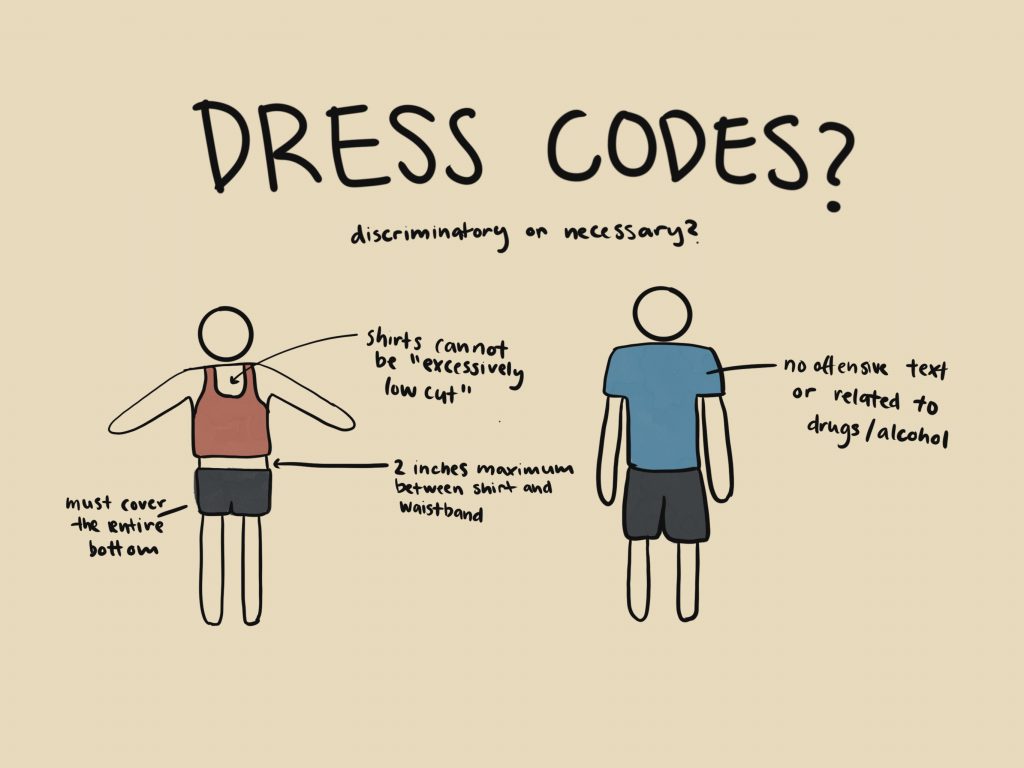Does the new dress code at Ridgewood High School infringe on students’ freedoms? Ridgewood prides itself on offering many unique privileges to its students, such as having an open campus and a lenient dress code. However, rumors had been circling all summer that the high school had created a new and more enforced dress code, and it became apparent this September that it was true.
Self-expression and individuality are vital in life, especially for a developing teen. Fashion is one of the many ways people feel they can express themselves and share their identity. Students at the high school were confident and comfortable going to school in a new style they were experimenting with. Having a school environment where students feel secure in what they are wearing without the fear of being judged and facing prejudice from teachers is crucial. This new dress code has created alarm amongst the student body in fear that it may negatively impact their day-to-day lives.
Mr. Bourque, the sophomore class Grade Advisor, gives much insight to this new dress code and what it means for the school community. When students heard that there was a new dress code the immediate assumption was that it would be far stricter than the previous one. Contrary to popular belief, Mr. Bourque says, “If you were to look at the dress code that is out there now and compare it to the previous dress code that was in the student code of conduct, it’s actually less strict in some ways. I think the difference and the way that it might feel more strict is because for the last couple years, the dress code has not really been enforced.” Due to COVID, Mr. Bourque and administrators at the high school believed that rules were less enforced–including dress code and attendance. One rule they want to now implement is that “student attire determined to be obscene, indecent, offensive to any race, religion, ethnicity, gender, sexual orientation, depicting illegal items or activity…shall not be permitted.” A different, more controversial rule that will affect predominantly female students is that “shirts will reach to within two inches of the waistband.” However, Mr. Bourque says that teachers are not going around measuring students’ tops and that the number is to serve more as a guideline to allow students to make judgments on what they believe is school-appropriate.
The revised dress code isn’t meant to constrict students’ fashion choices. Instead, it is supposed to be more accepting of current fashion trends, but although the revised dress code is less rigid, it will be enforced more. However, Mr. Bourque says that there hasn’t been an overwhelming amount of students being dress coded this year compared to previous ones. Many parents, administrators, teachers, and students believe that there should be some sort of dress code put in place. Difficulty comes with defining what those rules are, but last year, members of the GA team and students from the Intersectional Feminists Club worked together to edit the dress code. The Board of Education approved the revised dress code, which was implemented this year and can be found in the Student Code of Conduct.
Having an unbiased dress code that doesn’t just target one group of individuals is important, and students will be happy to hear that they should still feel the same freedom they felt before when choosing an outfit to wear to school.
Grace Diez
Staff Writer
Graphic: Vivian Yuan

